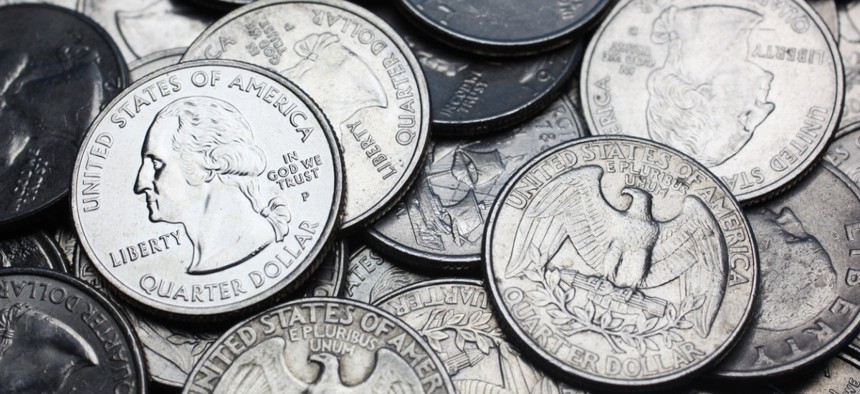Here Are the Pioneering Women who Will Be on New Quarters

blackred/iStock.com
Beginning in 2022, women’s faces will appear on quarters for the first time, and the public will help choose who will be minted.
Originally published by The 19th. Subscribe to our newsletter today.
Beginning in 2022, women’s faces will circulate through the nation’s currency on quarters — something long overdue, according to Rep. Barbara Lee, a California Democrat who has been working on this legislation since 2017.
“I wanted to make sure that women would be honored, and their images and names be lifted up on our coins. I mean, it’s outrageous that we haven’t,” Lee said. “Hopefully the public really delves into who these women were, because these women have made such a contribution to our country in so many ways.”
Lee began drafting legislation on the coin program with help from Rosa Rios, the Treasury official who oversaw the United States Mint under former President Barack Obama. She introduced her bill, the Circulating Collectible Coin Redesign Act, with two Republicans, Reps. Anthony Gonzalez of Ohio and Deb Fischer of Nebraska. It was signed into law in 2020.
The program will have the United States Mint circulate up to five chosen women on the reverse (tail) side of the quarter-dollar from 2022 to 2025 — allowing for up to 22 women to have their faces on U.S. quarters by the end of 2025. The Mint selected the first two women to be in circulation by 2022: the civil rights activist and poet Maya Angelou and astronaut Dr. Sally Ride.
“In circulation means if you go to purchase whatever in the grocery store … the chances are you may get a quarter with Dr. Maya Angelou or Dr. Sally Ride.”
It’s not just about the coins, but about what they represent and the power they have to start a dialogue in this nation around women who were trailblazers in their field, Lee said. The last time a woman appeared on U.S. currency was in 2000, when gold $1 Sacagawea coins went into circulation, honoring the Indigenous woman who helped the Lewis and Clark expedition explore the Louisiana Purchase territory.
The public will have the opportunity to nominate other women for the quarters using this form established by the National Women’s History Museum. Janet Yellen, the Treasury secretary, will select the women in consultation with the Smithsonian Institution’s American Women’s History Initiative, the National Women’s History Museum, and the Congressional Bipartisan Women’s Caucus. With this public form and additional input from organizations, Lee hopes to highlight a diverse range of women who come from all walks of life.
“I think it’s important that the public understands and knows how to weigh in on this,” Lee said.
“That’s a mammoth kind of effort that we’re mounting, but we’re getting the word out.”
The women chosen have to be deceased and can be influential in a myriad of fields and time periods including, but not limited to, civil rights, the women’s suffrage movement, government, the humanities or science.
Lee hopes opening the process to the public can help this become an educational tool, allowing young people to learn about influential women in history and understand their stories before submitting nominations.
“I think it is a good organizing tool that communities should use, and have children kind of tell stories and do the research and come up with who they think would be the woman that should be submitted,” Lee said. “It’s about time that people who exchange currency and coins understand that women deserve things. This is long past due.”
The Women on the Faces of the Quarters
Maya Angelou (April 4, 1928 – May 28, 2014)
Angelou was a civil rights activist, poet and writer best known for her 1969 memoir “I Know Why the Caged Bird Sings.” She wrote this book — which documents her childhood in Arkansas and her experiences of racism as a young Black woman — following her efforts to aid Black leaders across the nation, including Malcolm X and Martin Luther King Jr. In 1993, she became the first woman to be the inaugural poet in U.S. history, reciting “On the Pulse of Morning,” during former President Bill Clinton’s inauguration. She wrote seven autobiographies, three essay books and many other pieces that were adapted for the screen over the years. “There is no greater agony than bearing an untold story inside you,” Angelou said.
Dr. Sally Ride (May 26, 1951 – July 23, 2012)
Ride became the first American woman — and youngest American — to fly in space on June 18, 1983, on the Challenger space shuttle after NASA changed its policy to allow women astronauts in space in the late 1970s. Ride was studying physics and English at Stanford University when she saw her student newspaper run an ad looking for astronauts. She applied right away and was one of just six women selected to train. In 1986, when the Challenger shuttle exploded, killing all on board, Ride was one of the top investigators looking into the tragedy. In 2001, Ride co-founded Sally Ride Science, which aimed to motivate primarily young women and girls to explore the science and space fields largely dominated by men.
NEXT STORY: Quick Hits





